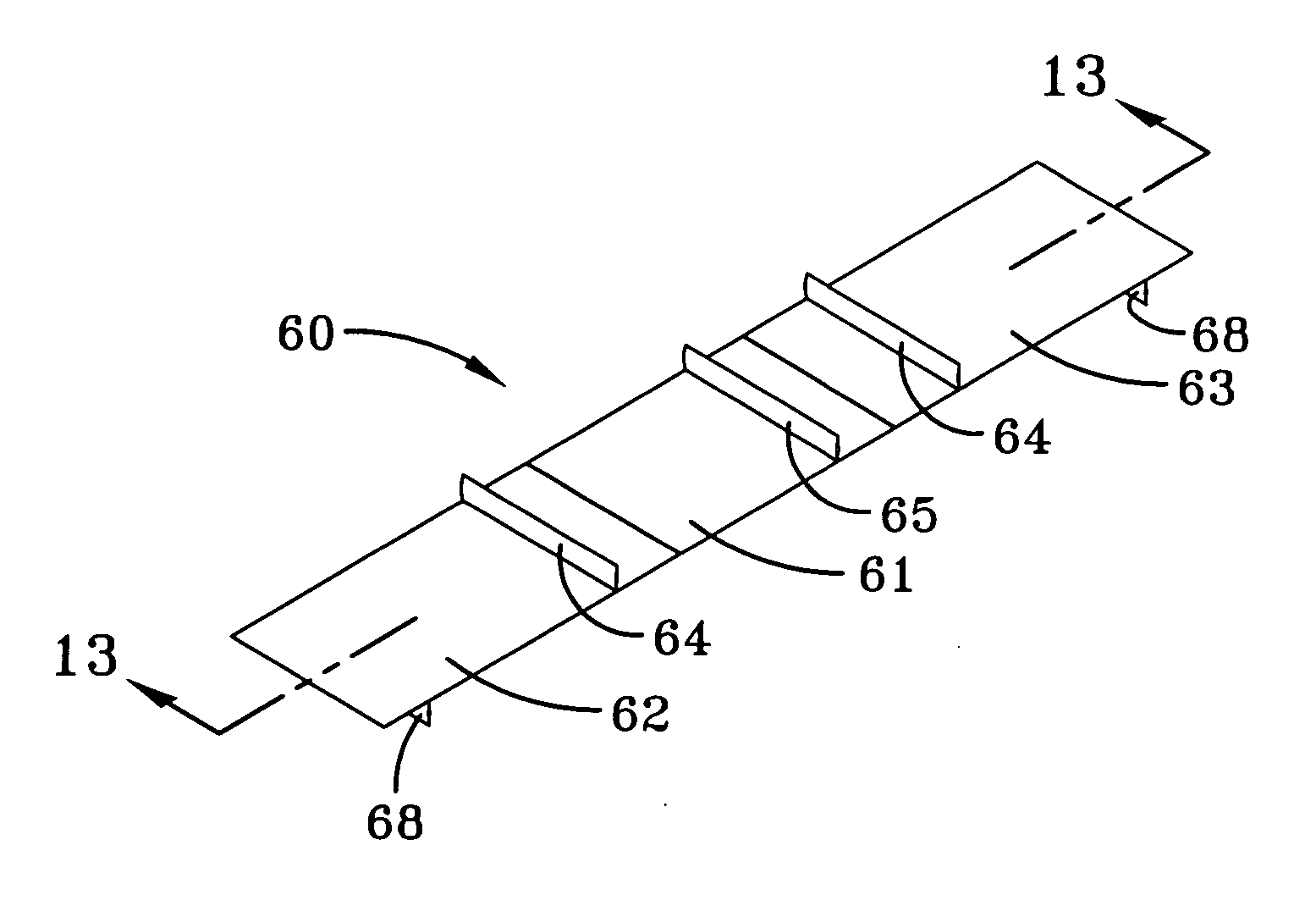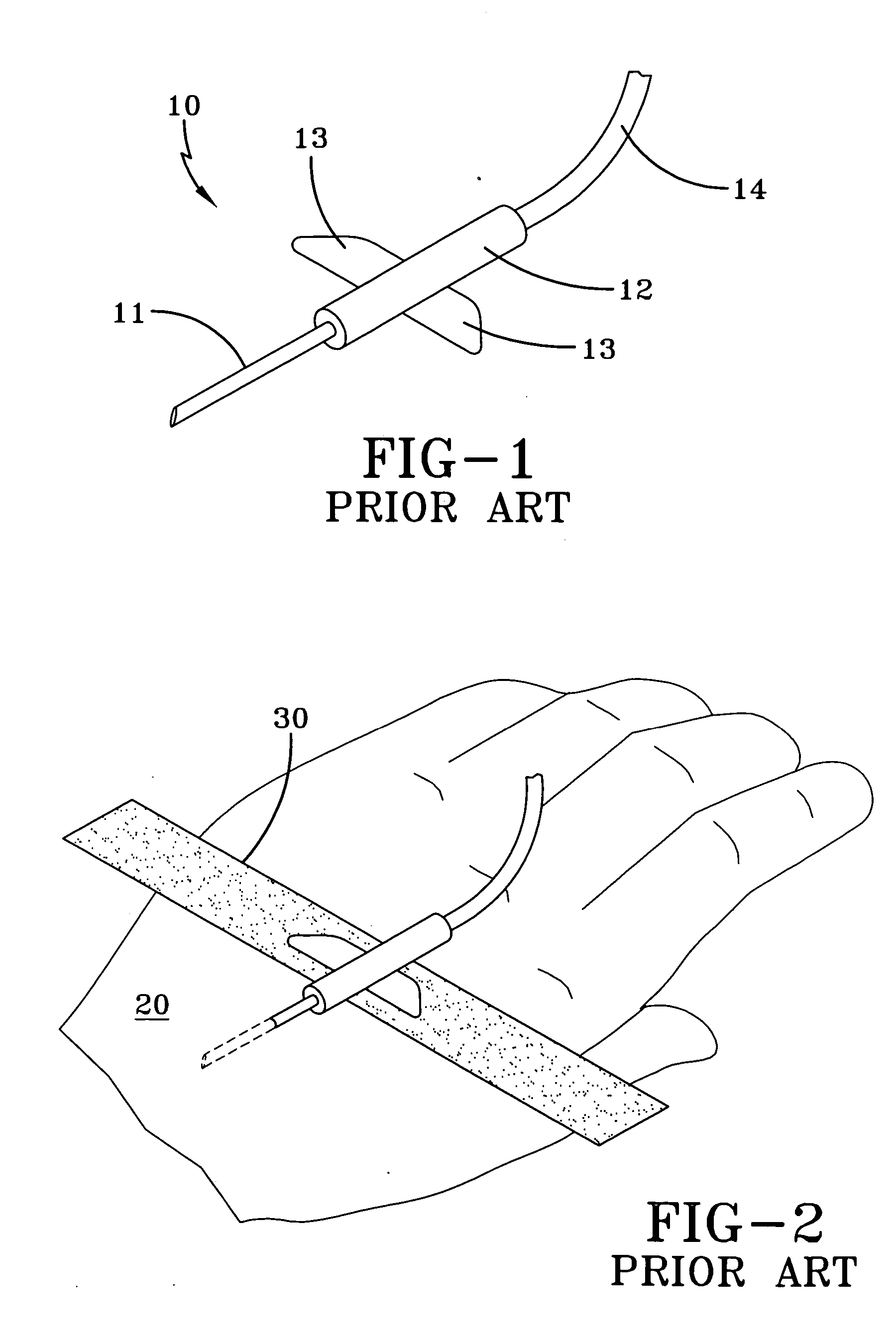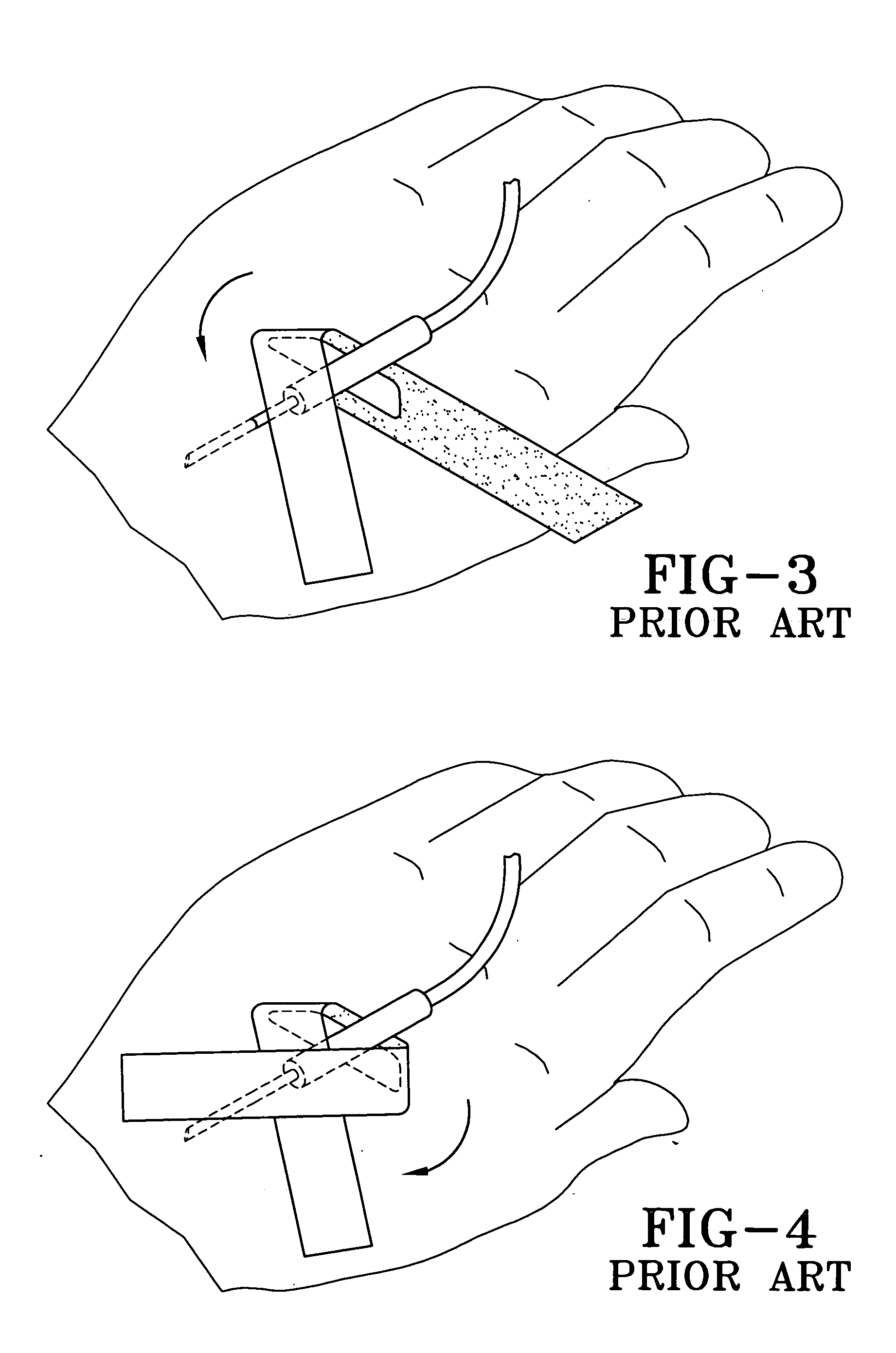Adhesive tape for an intravascular catheter
a technology for intravascular catheters and adhesive tapes, applied in the field of intravascular catheter adhesive tapes, can solve the problems of multiple contamination risks, difficulty in handling adhesive tape when wearing gloves, and single roll of adhesive tape used by different medical professionals, so as to improve the adhesive tape for intravascular catheters, reduce contamination risks, and be convenient to use
- Summary
- Abstract
- Description
- Claims
- Application Information
AI Technical Summary
Benefits of technology
Problems solved by technology
Method used
Image
Examples
example 2
[0042] The procedure utilized in Comparative Example 1 for inserting a catheter into a blood vessel on the back of a patient's hand can be done utilizing the adhesive tape and procedure of this invention. In this procedure, the healthcare provider first puts on sterile gloves for both his or her protection and the protection of the patient. Then a sterile towel is placed under the patient's arm or hand. Next, a tourniquet is applied to the patient's arm. The healthcare provider then cleans and sterilizes the site where the catheter will be inserted into the patient with an antiseptic skin prep such as antiseptic swab. The antiseptic is allowed to dry. In such a procedure an integral stylet is then inserted into a blood vessel on the back of the patient's hand by utilizing the sharp needle of the stylet to puncture through the patient's skin and other tissue to allow the stylet to enter the blood vessel. The needle is then removed from the patient's body while allowing the end of the...
example 3
[0047] The procedure utilized in Comparative Example 1 for inserting a catheter into a blood vessel on the back of a patient's hand can be done utilizing a sterile intravascular start kit that includes the adhesive tape of this invention. In such a procedure, the healthcare provider opens the sterile intravascular start kit and dons the sterile gloves that are packaged in the kit. Then a sterile towel is removed from the kit and placed under the patient's arm or hand.
[0048] Next, a sterile tourniquet is taken from the kit and applied to the patient's arm. The healthcare provider then removes an antiseptic skin prep, such as an antiseptic swab, from the kit and used it to clean and sterilize the site where the catheter will be inserted into the back of the patient's hand. The antiseptic is then allowed to dry. In such a procedure an integral stylet is then inserted into a blood vessel on the back of the patient's hand by utilizing the sharp needle of the stylet to puncture through t...
PUM
 Login to View More
Login to View More Abstract
Description
Claims
Application Information
 Login to View More
Login to View More - R&D
- Intellectual Property
- Life Sciences
- Materials
- Tech Scout
- Unparalleled Data Quality
- Higher Quality Content
- 60% Fewer Hallucinations
Browse by: Latest US Patents, China's latest patents, Technical Efficacy Thesaurus, Application Domain, Technology Topic, Popular Technical Reports.
© 2025 PatSnap. All rights reserved.Legal|Privacy policy|Modern Slavery Act Transparency Statement|Sitemap|About US| Contact US: help@patsnap.com



